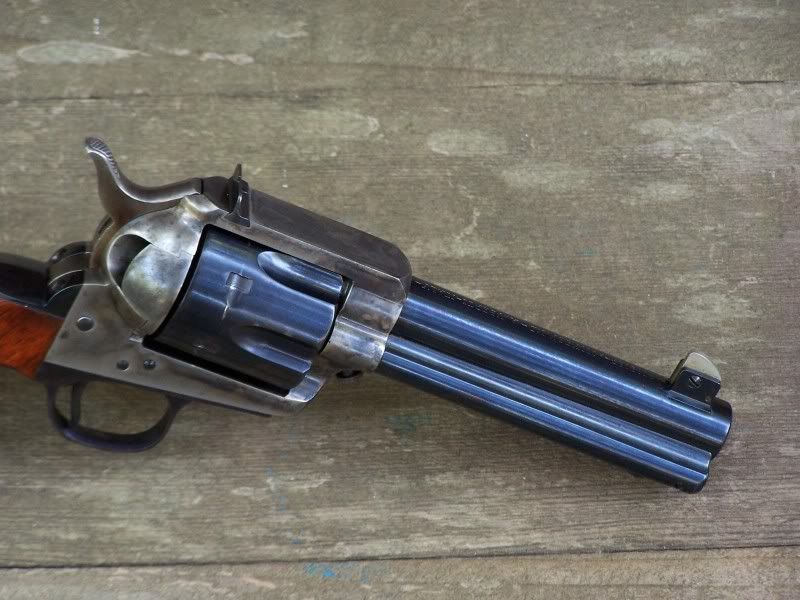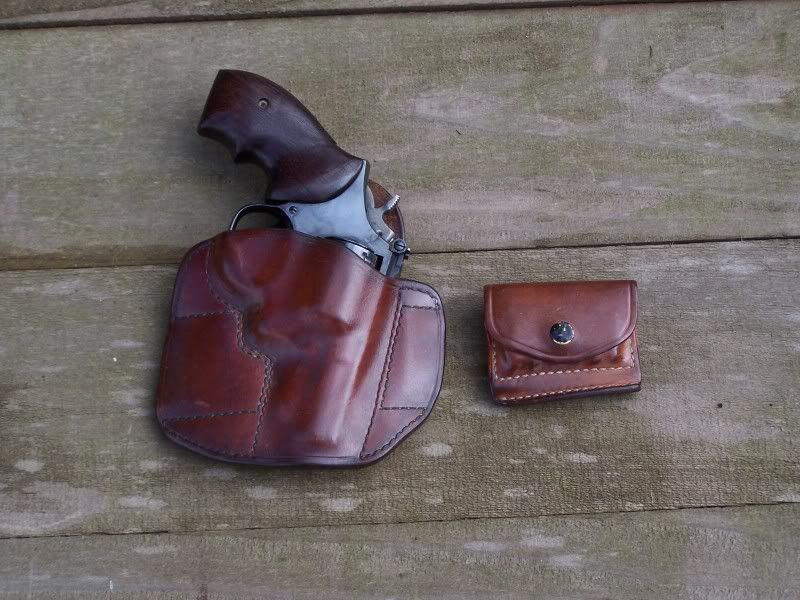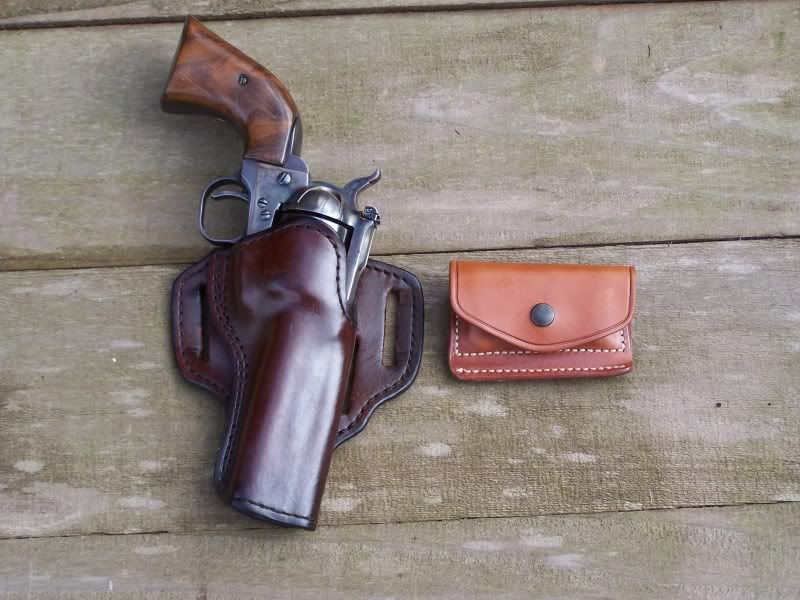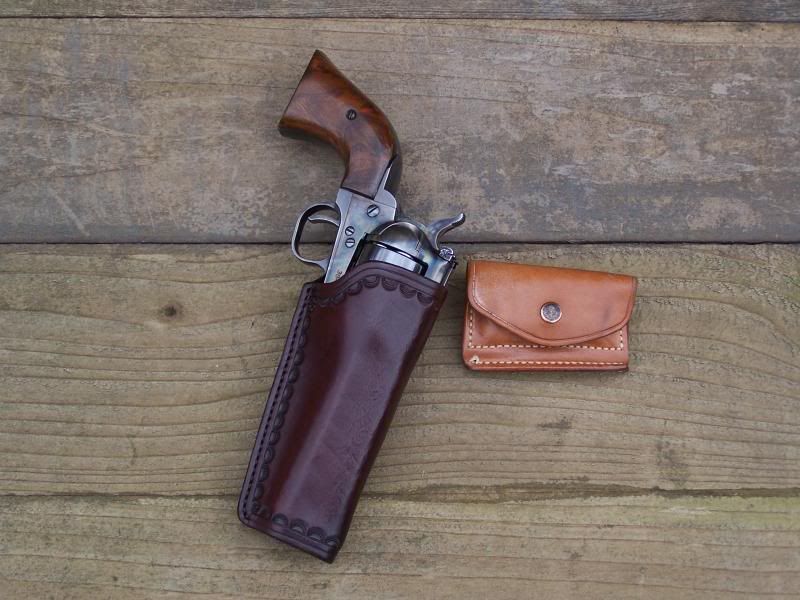Bob Wright
New member
The discussion about fixed sights vs. adjustable sights comes up frequently on this, and other, forums. For whatever its worth, here has been my experience.
First of all, I do prefer adjustable sights. But I'm not constantly fiddling with my sights. Once I'm sighted in, those adjustable sights are for all practicable purposes fixed. I sight in most of my revolvers to shoot to center of a 6" (more or less) dia. bullseye at twenty five yards, using a six o'clock hold. This means my point of impact is 3" above point of aim at twenty five yards. Using my pet .44 Magnum loads, this puts me pretty well on target out to 100 yards or so, and scores hits for me on the rams at 200 meters. Bear in mind I do not shoot in competition, so this is adequate accuracy for me.
As to fixed sights being regulated to point of aim from the factory, I have not found this to be the case. Most guns I've bought new with fixed sights usually shoot too low with most of my ammunition. This allows me to file the front sight down to get on target. Most of my fixed sight guns I sight in to hit a 1" dia. target spotter at ten yards.
My experience with fixed sight revolvers has led me to realize that I don't obtain as good a sight picture with the grooved frame rear sight, as the top of the frame is rounded, and at times I catch myself holding the front sight up to the imagined radius of the topstrap, while other times I hold along a line secant to the arc. Small difference to be sure, but makes a big difference as the range increases.
For these reasons I find the flat top of the blade of an adjustable sight to provide a better sight picture for me. One exception to this is a Uberti Flat Top copy of the Colt revolver. This does provide a much better sight picture that the Colt SAA type rear sights.
I have heard that some prefer the inverted "V" and "U" notch rear sights of the older Colts, but for me I can't hold elevation as well with this sight arrangement. My first revolver, a Colt New Service, had this sight arrangement and I shot it pretty well at first, but then I was shooting at targets that were paper picnic plates at maybe fifty feet of so.
I have always liked the front sight that comes on Ruger Blackhawks, and the S&W Baughman front sight after removing that pesky red insert. The Eliason rear sight, as furnished on current Colt New Frontiers is one of the best rear sights put on a gun, along with the old Millett rear sights.
Uberti Flat Top Rear Sight:

This has worked very well for me over many years of shooting.
Bob Wright
First of all, I do prefer adjustable sights. But I'm not constantly fiddling with my sights. Once I'm sighted in, those adjustable sights are for all practicable purposes fixed. I sight in most of my revolvers to shoot to center of a 6" (more or less) dia. bullseye at twenty five yards, using a six o'clock hold. This means my point of impact is 3" above point of aim at twenty five yards. Using my pet .44 Magnum loads, this puts me pretty well on target out to 100 yards or so, and scores hits for me on the rams at 200 meters. Bear in mind I do not shoot in competition, so this is adequate accuracy for me.
As to fixed sights being regulated to point of aim from the factory, I have not found this to be the case. Most guns I've bought new with fixed sights usually shoot too low with most of my ammunition. This allows me to file the front sight down to get on target. Most of my fixed sight guns I sight in to hit a 1" dia. target spotter at ten yards.
My experience with fixed sight revolvers has led me to realize that I don't obtain as good a sight picture with the grooved frame rear sight, as the top of the frame is rounded, and at times I catch myself holding the front sight up to the imagined radius of the topstrap, while other times I hold along a line secant to the arc. Small difference to be sure, but makes a big difference as the range increases.
For these reasons I find the flat top of the blade of an adjustable sight to provide a better sight picture for me. One exception to this is a Uberti Flat Top copy of the Colt revolver. This does provide a much better sight picture that the Colt SAA type rear sights.
I have heard that some prefer the inverted "V" and "U" notch rear sights of the older Colts, but for me I can't hold elevation as well with this sight arrangement. My first revolver, a Colt New Service, had this sight arrangement and I shot it pretty well at first, but then I was shooting at targets that were paper picnic plates at maybe fifty feet of so.
I have always liked the front sight that comes on Ruger Blackhawks, and the S&W Baughman front sight after removing that pesky red insert. The Eliason rear sight, as furnished on current Colt New Frontiers is one of the best rear sights put on a gun, along with the old Millett rear sights.
Uberti Flat Top Rear Sight:

This has worked very well for me over many years of shooting.
Bob Wright
Last edited:






